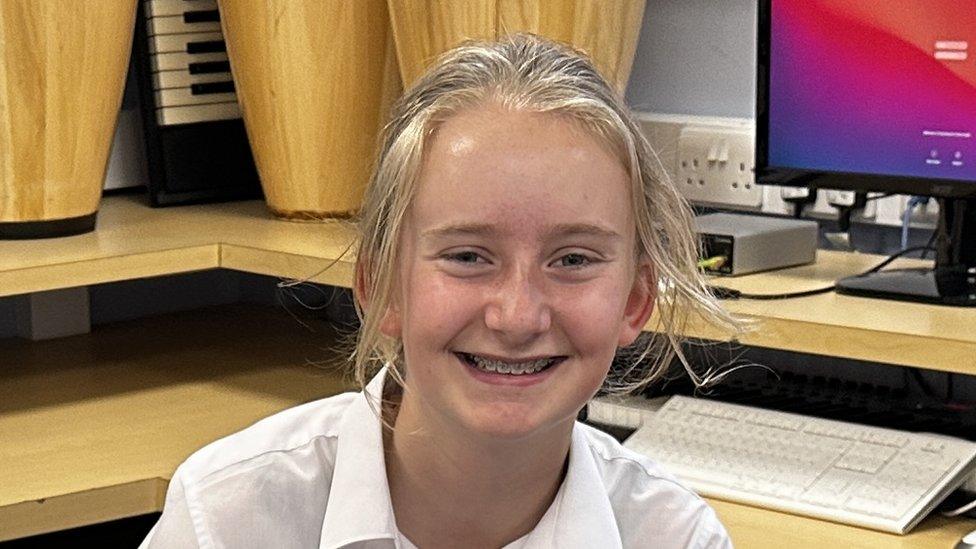Scoliosis patient hopes tattoo will 'stop bullies'
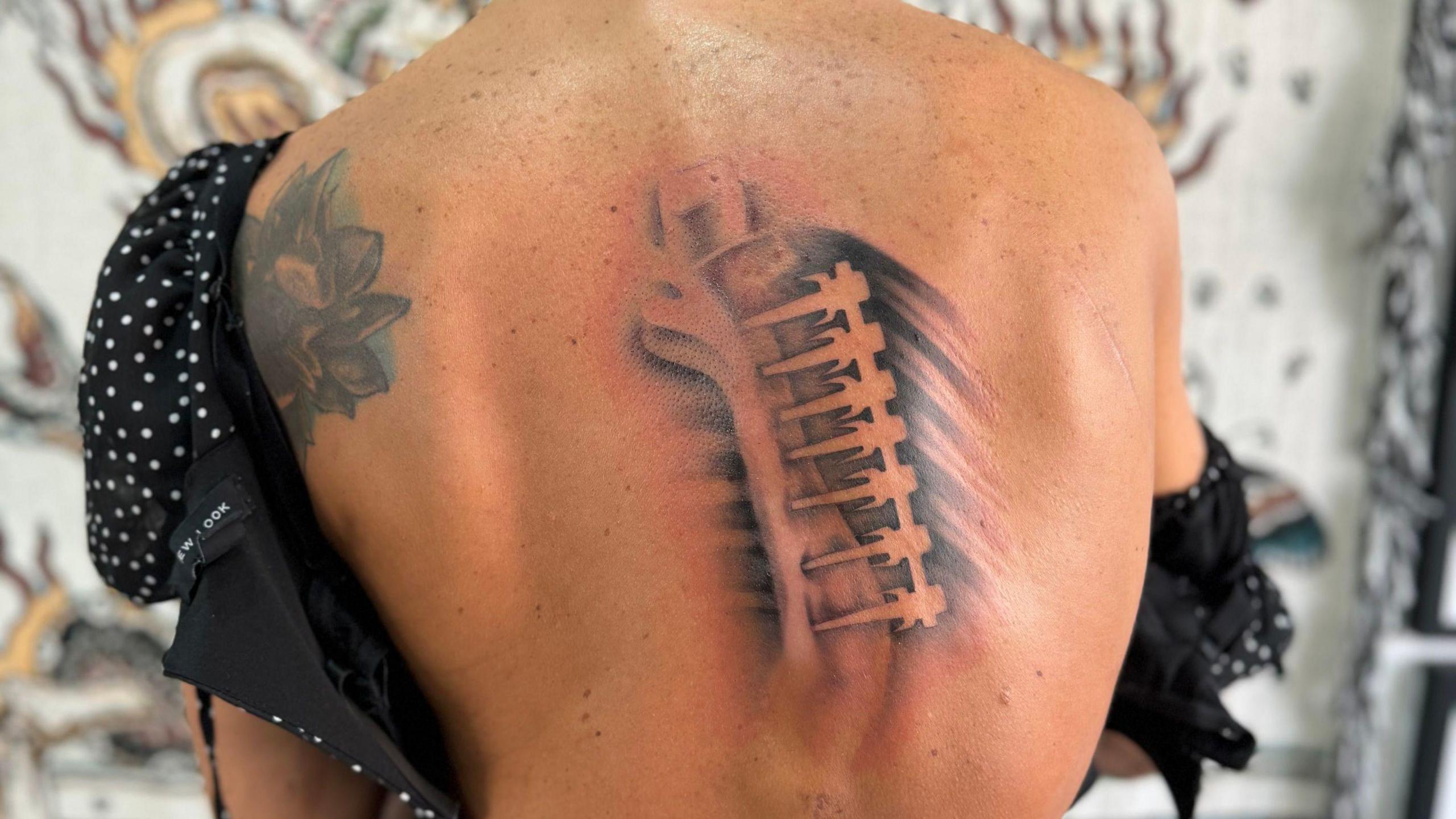
Ms Ellis plans to add flowers to the design and she hopes the visual representation will "stop the bullying"
- Published
A fitness instructor who has scoliosis hopes a back tattoo of the metalwork she had inserted into her spine will "stop the bullying" she endures.
Laura Ellis, 37, who lives in Cirencester, Gloucestershire, says strangers often point and stare, and sometimes laugh at her.
Ms Ellis experiences "constant toothache", muscle spasms and wants to make the most of life before she becomes a permanent wheelchair user.
"It’s not just a tattoo, it’s something that might actually make my life a little easier," she said.
While unfinished, the work by tattoo artist Nick Ferris from Strange Ways Tattoo in Swindon, Wiltshire, was paid for by a £500 fundraiser and shows the curvature in her spine, along with the rod and bolts in her bones.
Ms Ellis, who hopes the visual representation of her scoliosis will “stop the bullying”, said: “When I first saw it, I thought, ‘It’s perfect’.
“I wasn’t expecting anything with the fundraiser, but because it’s such a personal thing, I thought that somebody might understand why I’m doing it," she said.
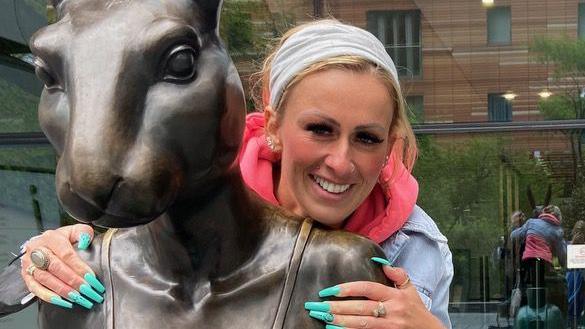
Ms Ellis said she had experienced people laughing and staring at her because of her condition
She did not experience problems with her spine growing up until the age of 11. Her parents noticed she could not stand up straight while they were on holiday in Majorca.
After returning to the UK, she then discovered her thoracic, the middle section of her spine - had collapsed.
Aged 12, she underwent a nine-hour operation at the John Radcliffe Hospital in Oxford - which included doctors "shaving" her right ribcage and putting a metal rod and seven bolts into her bones.
“My right ribcage basically ended up on my back, which is where the staring comes from, but my lungs and ribs were crushing because of the rotation and all my organs were moving,” said Ms Ellis.
“Because of where the collapse was, if I didn’t have (the surgery), I would have died," she added.
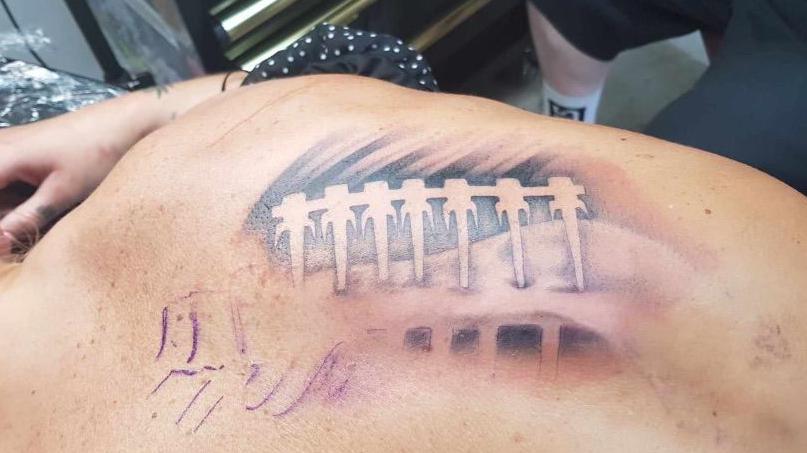
The tattoo was done by artist Nick Ferris at Strange Ways Tattoo in Swindon
'Laughing at me'
Following the surgery, Ms Ellis, who had to wear a back brace to sleep and while she was at school, said her condition was "better for some years" but at the age of 19, she started to notice a change in the shape of her lower torso.
Ms Ellis said straightaway, she knew her lumbar, the lower back region of your spinal column or backbone, "was collapsing as well".
With the effects of her scoliosis becoming increasingly apparent in her 20s, Ms Ellis said her stomach started to protrude with the rotation of her spine.
Ms Ellis said the changes to her body were "frustrating".
“I went on a spontaneous trip to Turkey with my mum and we were on a boat one day with this group of women," she said.
“They were not just staring and whispering and talking, but they were actually laughing at me," she added.
Ms Ellis, who has decided not to pursue further surgery due to the high-risk of paralysis, said while “there’s no point in getting angry”, other people’s reactions have impacted her significantly, leading her to feel low and self-conscious at times.

Ms Ellis says she often experiences muscle spasms in her back due to the condition
With her spine continuing to collapse above and below the bolts, Ms Ellis said she experiences daily "constant toothache" pain and said her right arm and leg are three inches longer than her left.
She also experiences excruciating muscle spasms in her back and cannot sit or stand in one position for too long.
Ms Ellis said: “It’s never going to get any better, it’s only going to keep progressing, and through my 30s, I’m now the worst I’ve ever been.
“One day, my life won’t be the same, I won’t be able to walk, so whilst I can do all that I do, I’m just going to make the most of it.
“When all is said and done and I’m in my wheelchair – which is where I’ll end up and I’ve come to terms with that – I want to be able to sit wherever I am and smile at all the memories," she added.
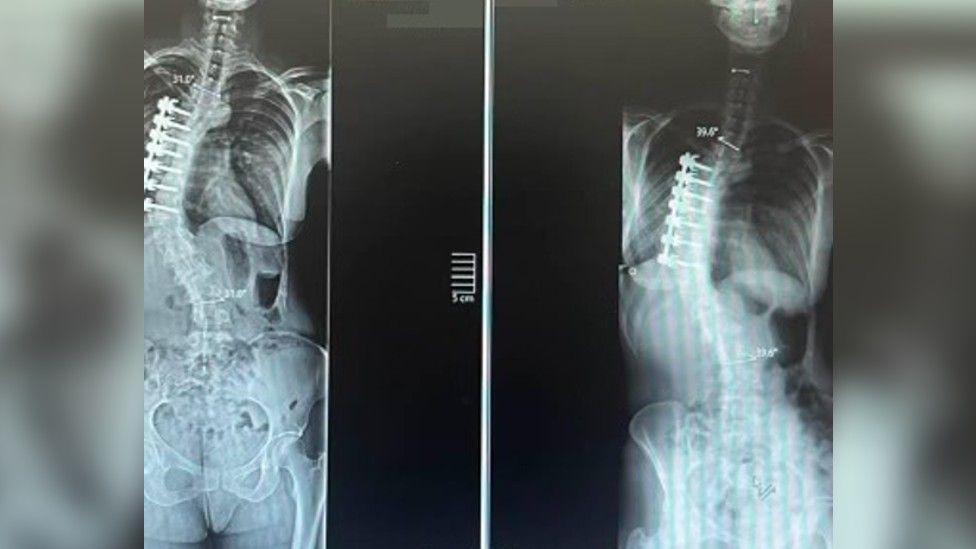
Ms Ellis has scoliosis, a condition where the spine twists and curves
What is scoliosis and what are the symptoms?
Scoliosis is a condition where the spine twists and curves to the side.
Affecting people of any age, from babies to adults, the condition most often starts in children aged 10 to 15.
Scoliosis can improve with treatment, but it is not usually a sign of anything serious and treatment is not always needed if it is mild.
Signs of scoliosis include:
a visibly curved spine
leaning to 1 side
uneven shoulders
1 shoulder or hip sticking out
the ribs sticking out on 1 side
clothes not fitting well
Some people with scoliosis may also have back pain, which is usually more common in adults with the condition.
Source: NHS, external
Follow BBC Gloucestershire on Facebook, external, X, external and Instagram, external. Send your story ideas to us on email or via WhatsApp on 0800 313 4630.
- Published4 April 2024
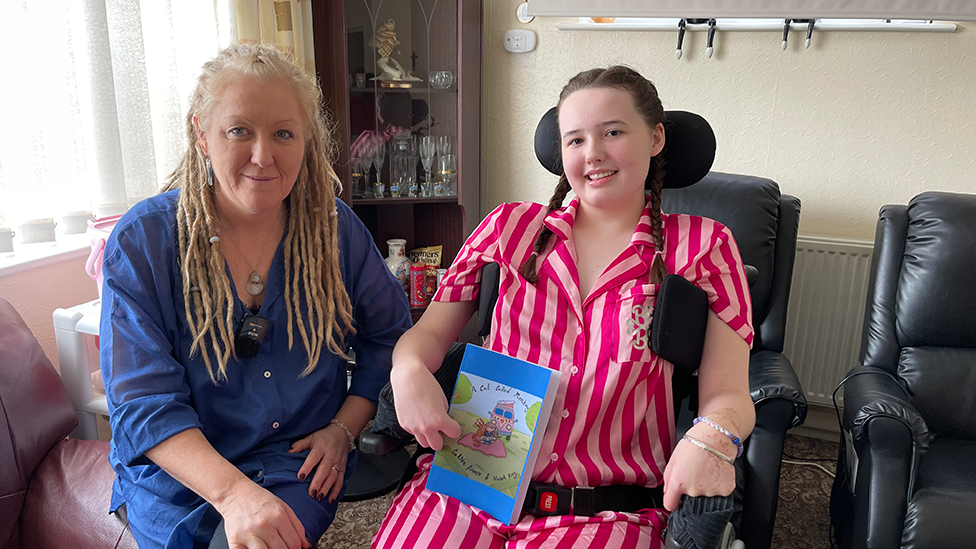
- Published30 January 2024
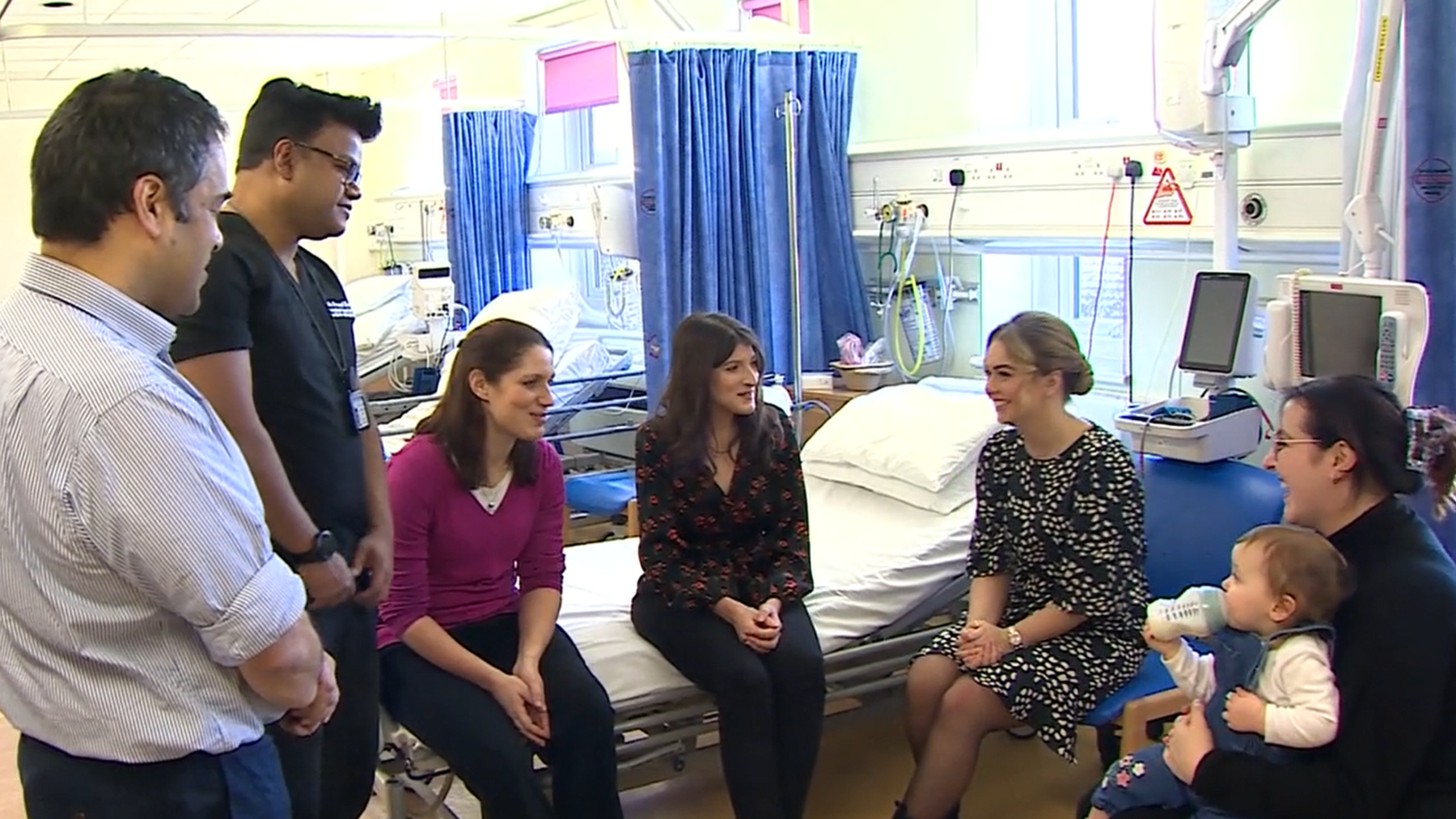
- Published24 June 2023
